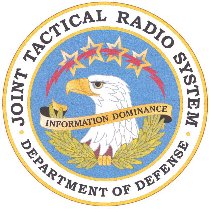Joint Tactical Radio System
The Joint Tactical Radio System ( JTRS , often pronounced in English jitters ) is to be the next generation of the voice and data radio used by the US military in field operations after 2010. Started in 1997 with a " Mission Needs Statement " and a resulting requirements document in 1998 (it was revised several times), JTRS is a software defined radio that will work with the many existing military and civilian radios. It includes integrated encryption and broadband network software to create mobile ad hoc networks .
The JTRS program has been marked by delays and cost overruns, particularly from Ground Mobile Radios (GMR, operated by Boeing ). Issues included a decentralized administrative structure, changing requirements, and unexpected technical difficulties that increased target size and weight targets, which in turn made it more difficult to replenish the required waveforms.
The JTRS is based on the Software Communications Architecture (SCA), an open architecture that guides designers to operate hardware and software in harmony. It regulates the structure and functioning of the JTRS so that programmable radios can load waveforms, start applications and be networked into an integrated system. A so-called core framework provides a standard operating system environment that must be implemented on every hardware. Interoperability between radios is increased as the same waveform software can be easily ported to all radios.
The Object Management Group (OMG), a non-profit consortium, maintains and produces computer industry specifications for interoperable company applications and is working on the development of an international trade standard based on the SCA.
Web links
- New Radio for U.S. Military: A $ 6 Billion Fiasco diepresse.com, accessed June 20, 2012
